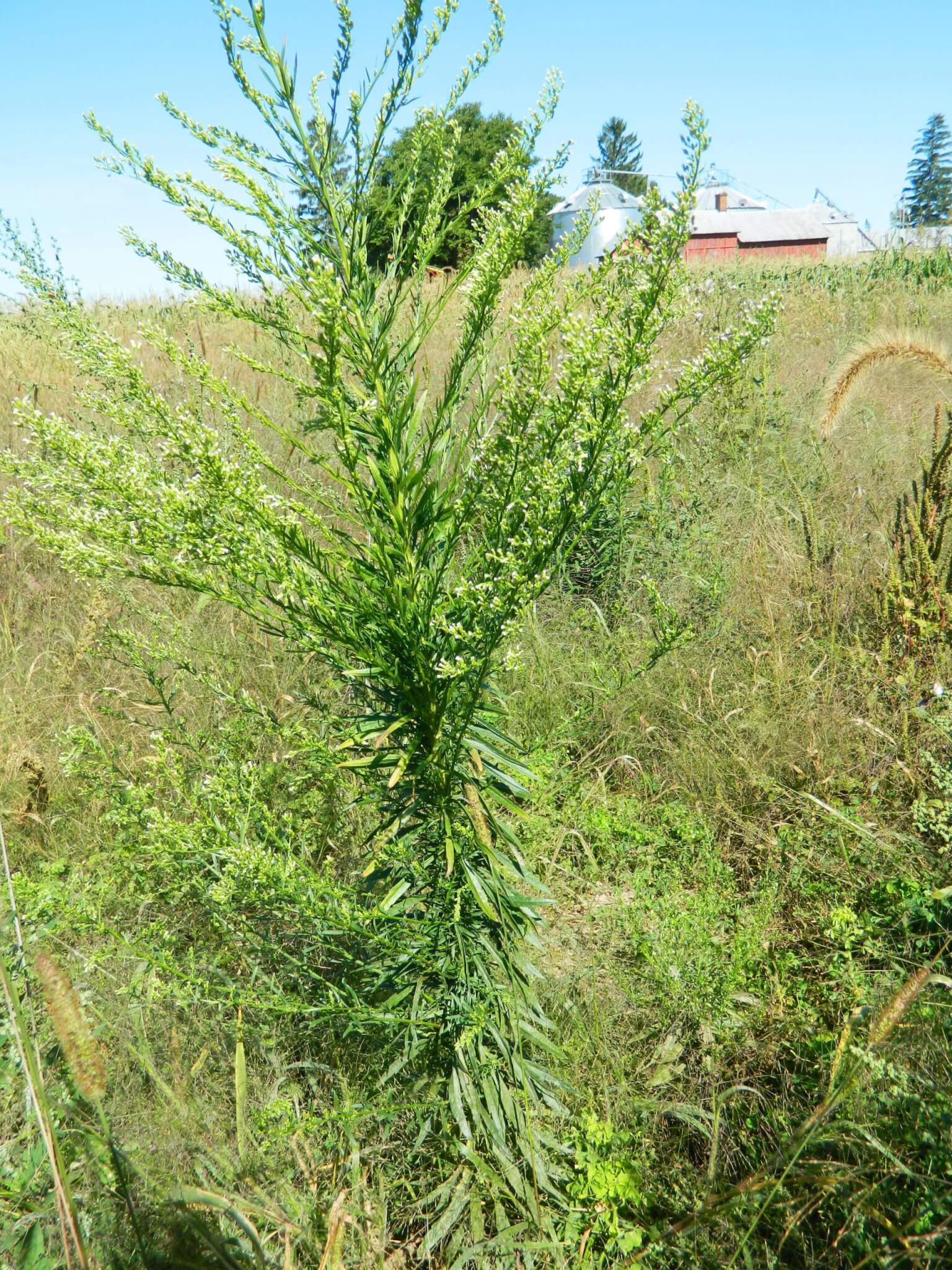This article was originally published via GROW (Getting Rid of Weeds)
Equipment
- They go through fields during the time of year when escaped weeds are producing seed
- They harvest whole plants including the weeds, and
- They have many small spaces where seeds can hide.
Seed, Grain, and Seed Mixes
When bin-run cash crop seed is purchased from agricultural areas where herbicide resistant weeds are present, weed seeds mixed in with the cash crop seed can be transported to other fields at planting. Best management practices advise only planting certified crop seed. Certification programs are state-specific but always require diligence to ensure that harvested crops do not contain problem weed seeds. Some states have noxious weed laws in place to discourage the distribution of contaminated seed. If contaminated seed mixes are planted, it is quite likely that the weed seeds will germinate and start an infestation in that field. It is highly recommended to aggressively scout and control weeds after planting to ensure that any weeds in the seed mix are not allowed to reproduce and further spread.
Case study: As of September 9, 2016, Iowa State University weed scientists have confirmed the recent introduction of Palmer amaranth to 28 Iowa counties. In 20 of these counties, introduction occurred via the establishment of native seed mixes for conservation plantings. In the remaining eight counties, the weed introduction was traced back to conventional farm operations. According to Meaghan Anderson, ISU Field Agronomist, hand-pulling individual plants as early as possible is the preferred method to eliminate the weed in conservation plantings. She goes on to say:
“The establishment of Palmer amaranth in conservation planting across the state is unfortunate. However, the long-term impact of the contaminated seed mixes can be minimized by responding accordingly. Seed mixes purchased from several seed producers/vendors have been the source of Palmer amaranth. Fields planted with native seed mixes earlier this spring should be scouted as soon as possible to determine if Palmer amaranth is present. If found, there is still time to minimize seed production and the risk of Palmer amaranth spreading into crop fields in the area. Since some viable Palmer amaranth seed is likely present, take appropriate precautions to prevent moving seed from source fields with mowers or other equipment.” Excerpt from Managing Palmer Amaranth in Conservation Plantings – Iowa State University
Palmer amaranth in Iowa counties was found as early as October 31, 2016; date of infestation varied depending on setting (conservation or agricultural land, or railroad right of way).
Animals and Feed

Initial identification of Palmer amaranth in Iowa counties as of October 31, 2016. A black X indicates that the weed was found first on conservation land (Photo credit: Managing Palmer Amaranth in Conservation Plantings, Iowa State Univ.)
Animal feed and manure have been identified as a mechanism of spread for herbicide resistant weeds over long distances and across state lines. Many weed seeds, like pigweed, can survive digestion and germinate after the animal defecates. If livestock eat feed that contains weed seeds, their manure can actually spread viable weed seeds when it is spread onto the field. Some examples of livestock products that have been found to be a common source of weed seeds include cottonseed refuse in dairy rations, chicken feed, and chicken litter that is distributed as manure.
Wild animals can spread weed seeds, as well. In the study below, University of Missouri weed specialists discovered that ducks spread Palmer amaranth during their migration from the southern US up to the Midwest.
Palmer amaranth seed dispersal by Ducks – University of Missouri and video “Waterfowl & Weed Seed Movement”.
Wind-dispersal
Kochia is a prime example of a wind-dispersed herbicide-resistant weed. Kochia, or “tumbleweed,” has confirmed glyphosate resistant populations. A main way it spreads is when plants dry up and are blown long distances by the wind.
“Kochia trails” form through fields when the wind-blown tumbleweeds create trails of seed, which germinate the next year. Kochia also has windborne pollen, which can spread resistance genetics to neighboring fields. Herbicide-resistant kochia has been found in western states, including Kansas, Nebraska, Colorado, North Dakota, South Dakota, Montana, and Oregon, and Canadian provinces including Alberta and Saskatchewan. Learn more about herbicide resistant kochia here.
Horseweed (marestail) is a summer annual or biennial broadleaf weed that has populations resistant to multiple herbicide groups. It’s present in many US states throughout the mid-Atlantic and Midwest. The seeds are primarily wind-dispersed, but they can also be spread via equipment, animal feed, and seed mixes. It is typical for horseweed seeds to travel from 1 km up to several km, depending on typical local wind speeds. If the seeds get caught in high vertical winds and reach high wind currents, seeds and pollen can be carried much longer distances – even across state lines. According to Mark VanGessel, weed scientist at the University of Delaware, the resistant horseweed that heavily infests Delaware farms may likely have arrived there by way of wind currents from the Midwest within a single year. Learn more about herbicide-resistant horseweed here.
Resources:
- The straw bale methodology for deep weed seed combine cleaning, University of Delaware.
- How cover crop seed can be a vector for the spread of weed seeds – Iowa State University
- How livestock spread weed seed through feed and manure – University of Minnesota
- Spread of herbicide resistant Kochia – University of Manitoba
- The spread of herbicide resistant weeds: What should growers know? – University of Arkansas
Hero Photo Credit: Claudio Rubione, University of Delaware





 and then
and then